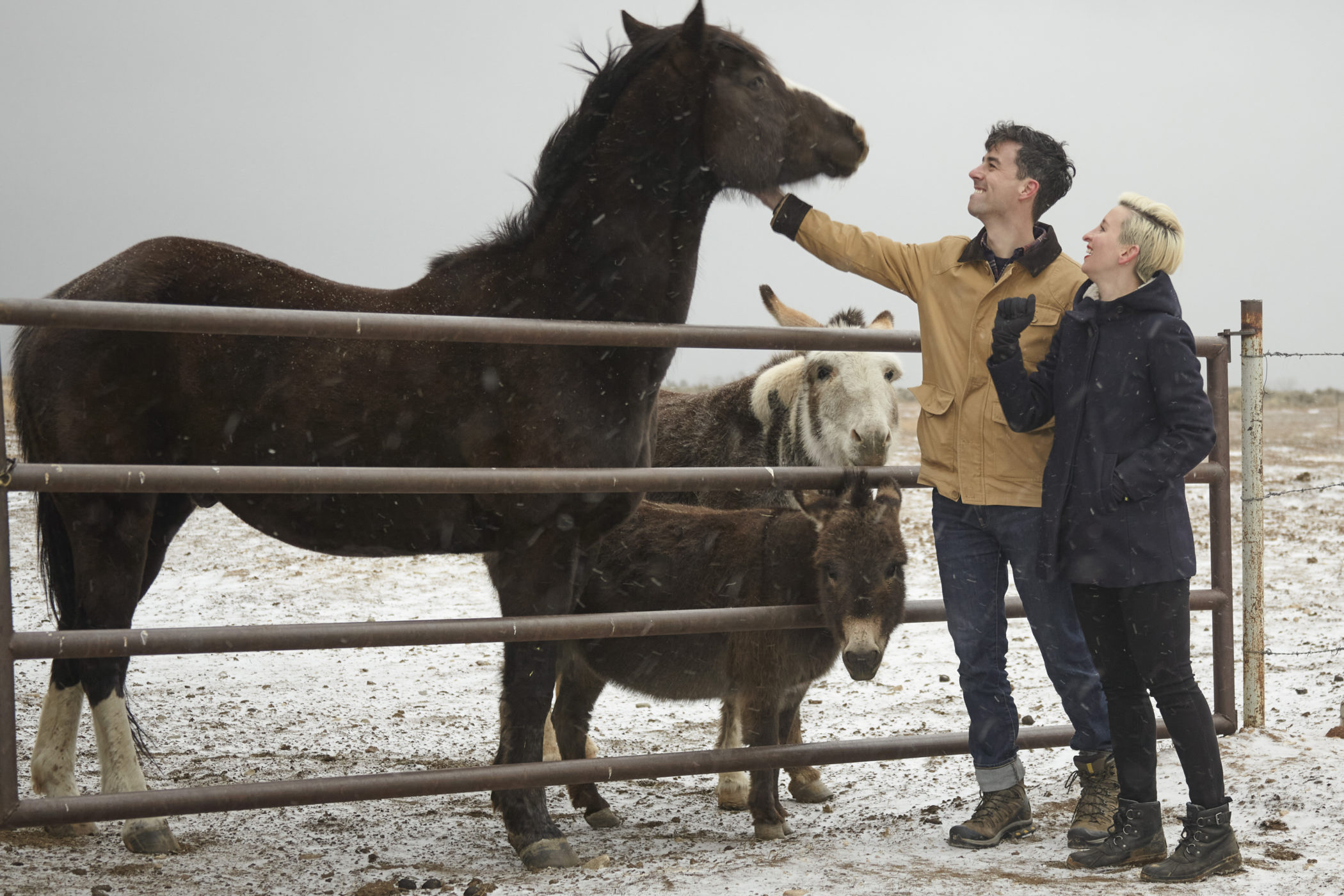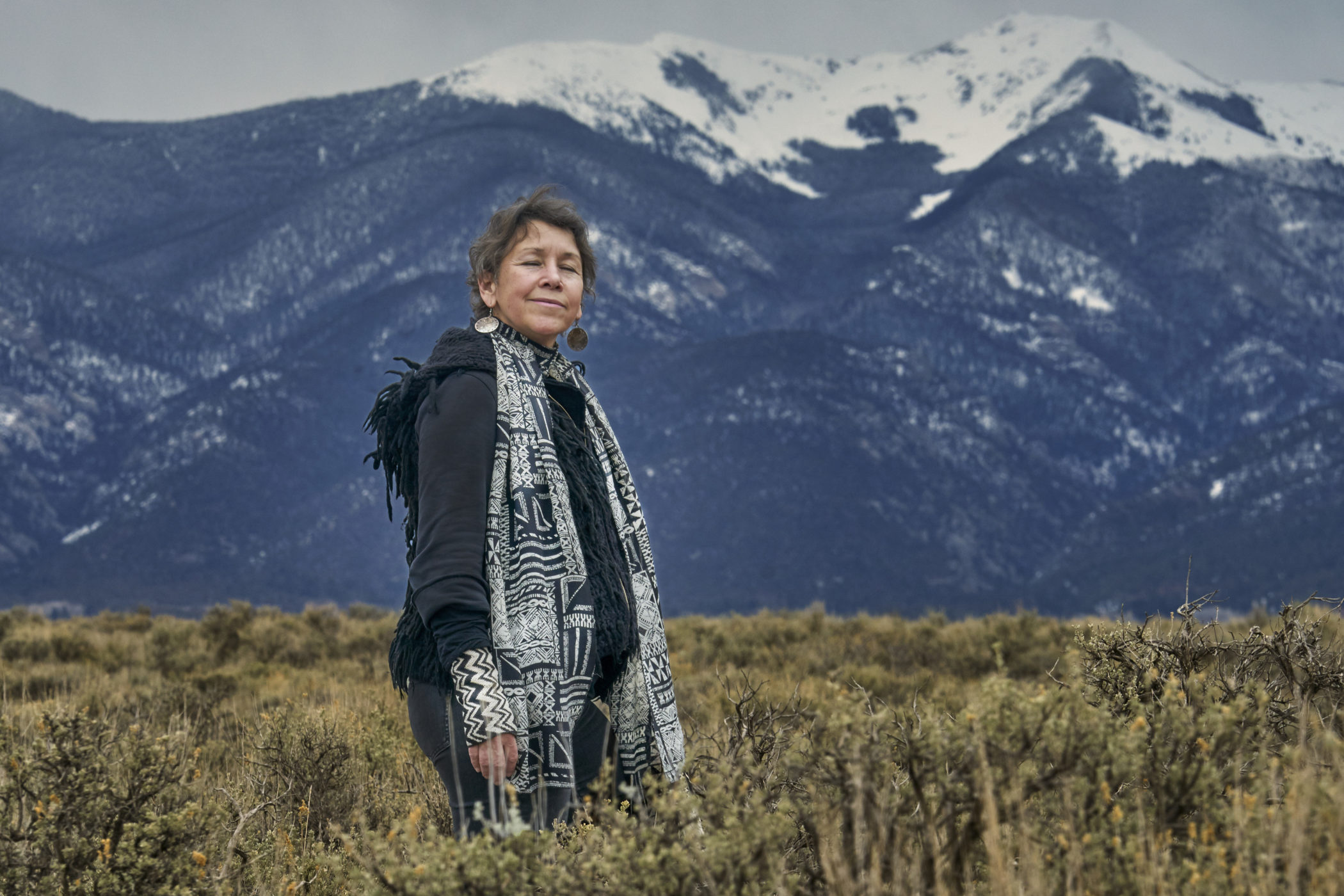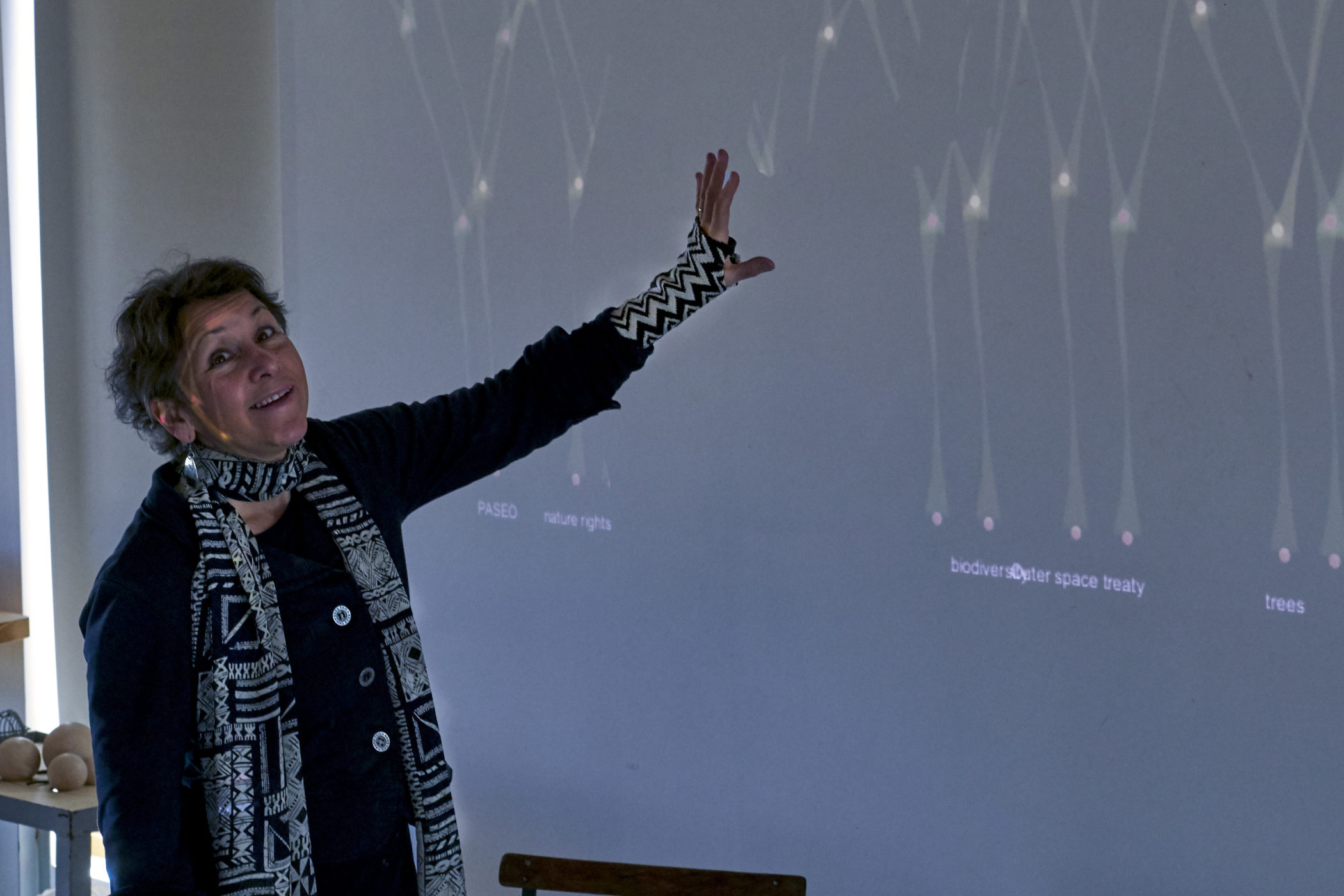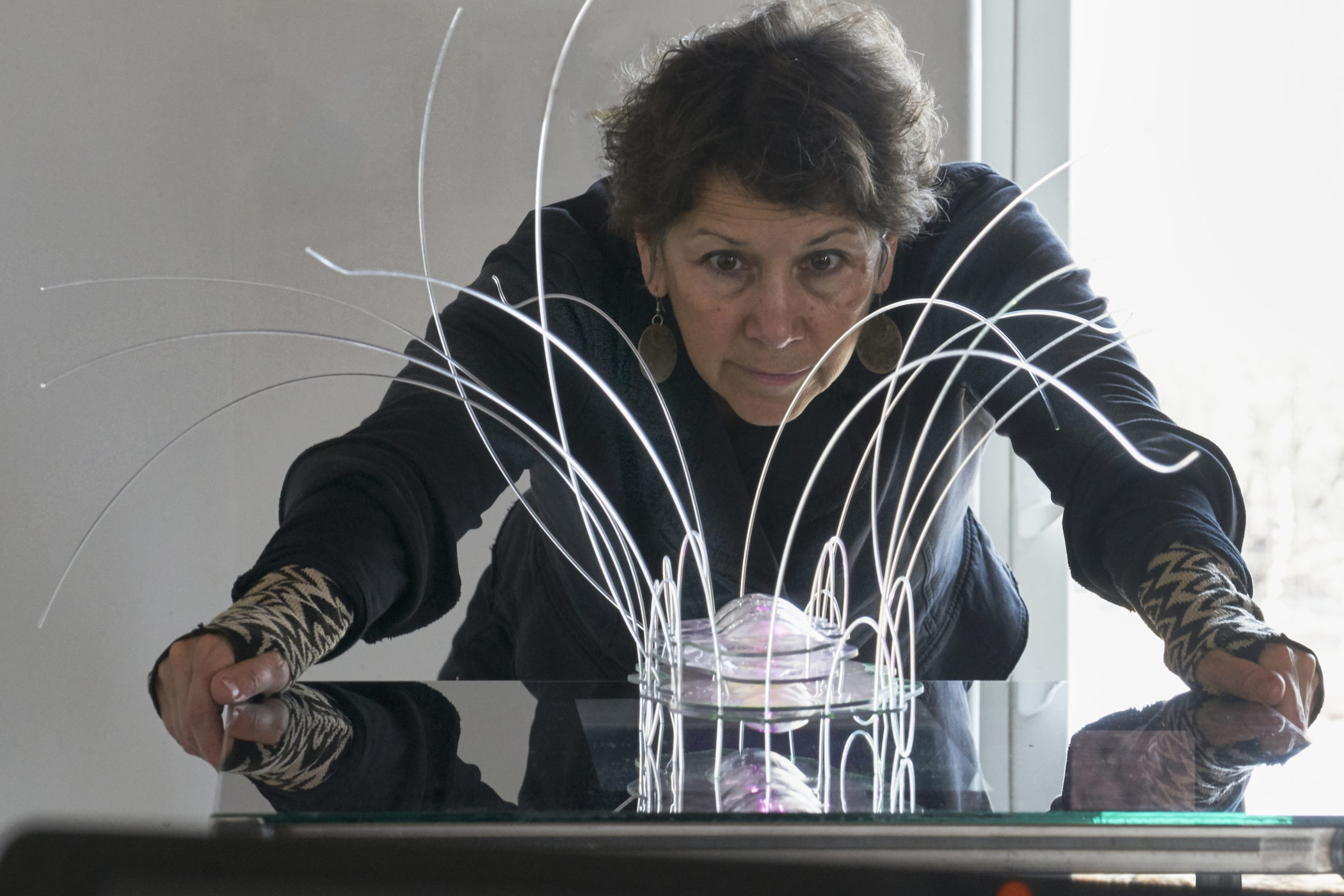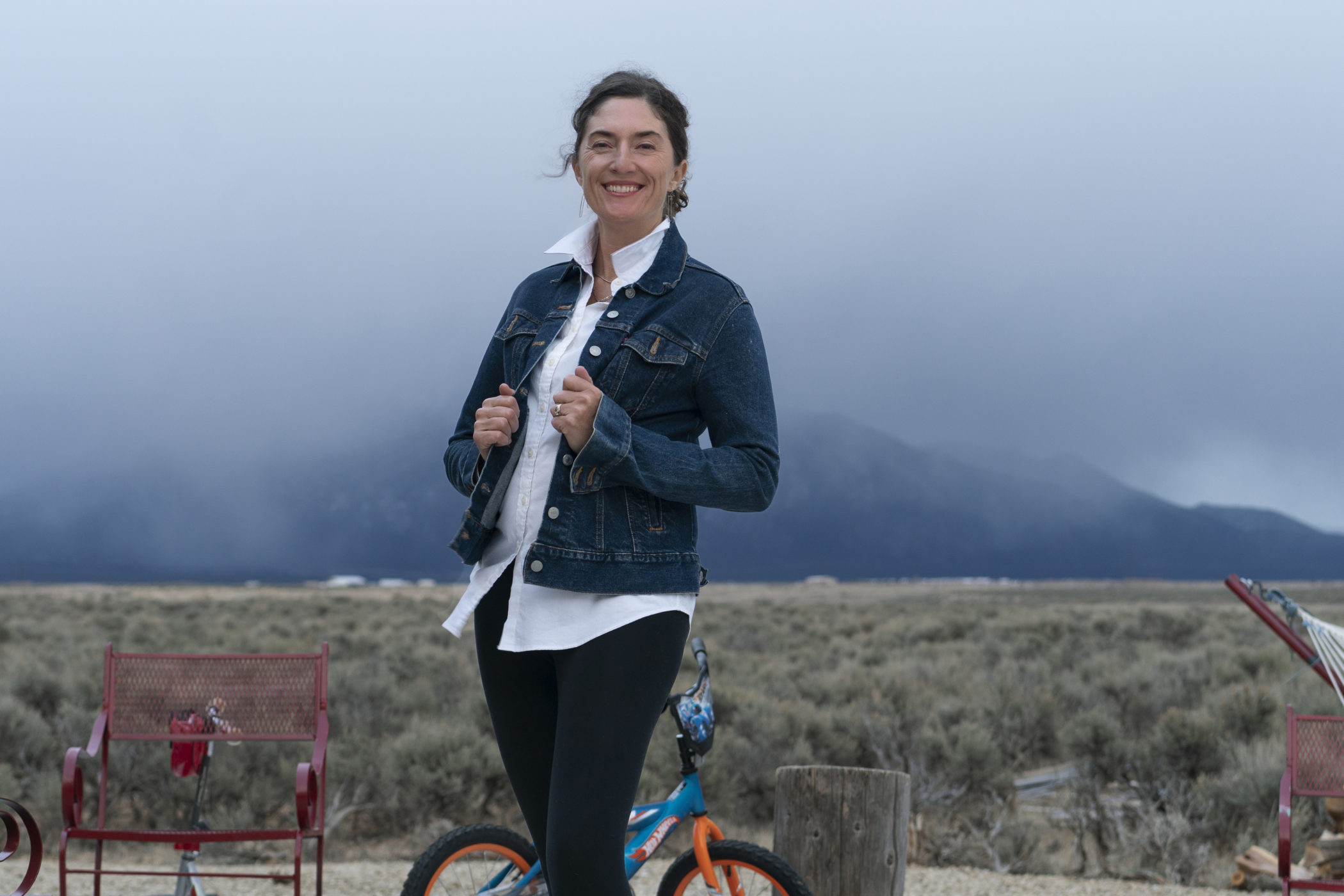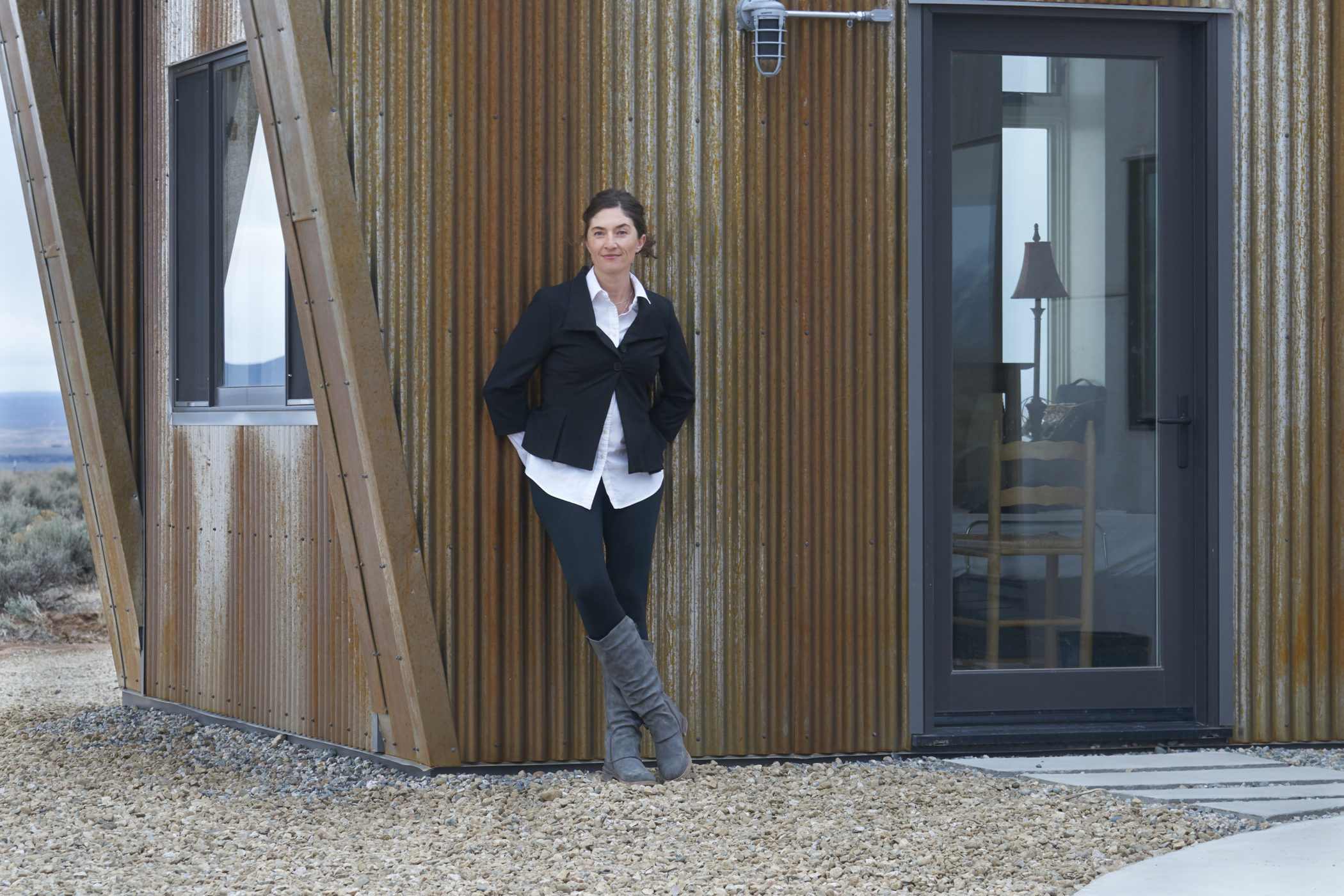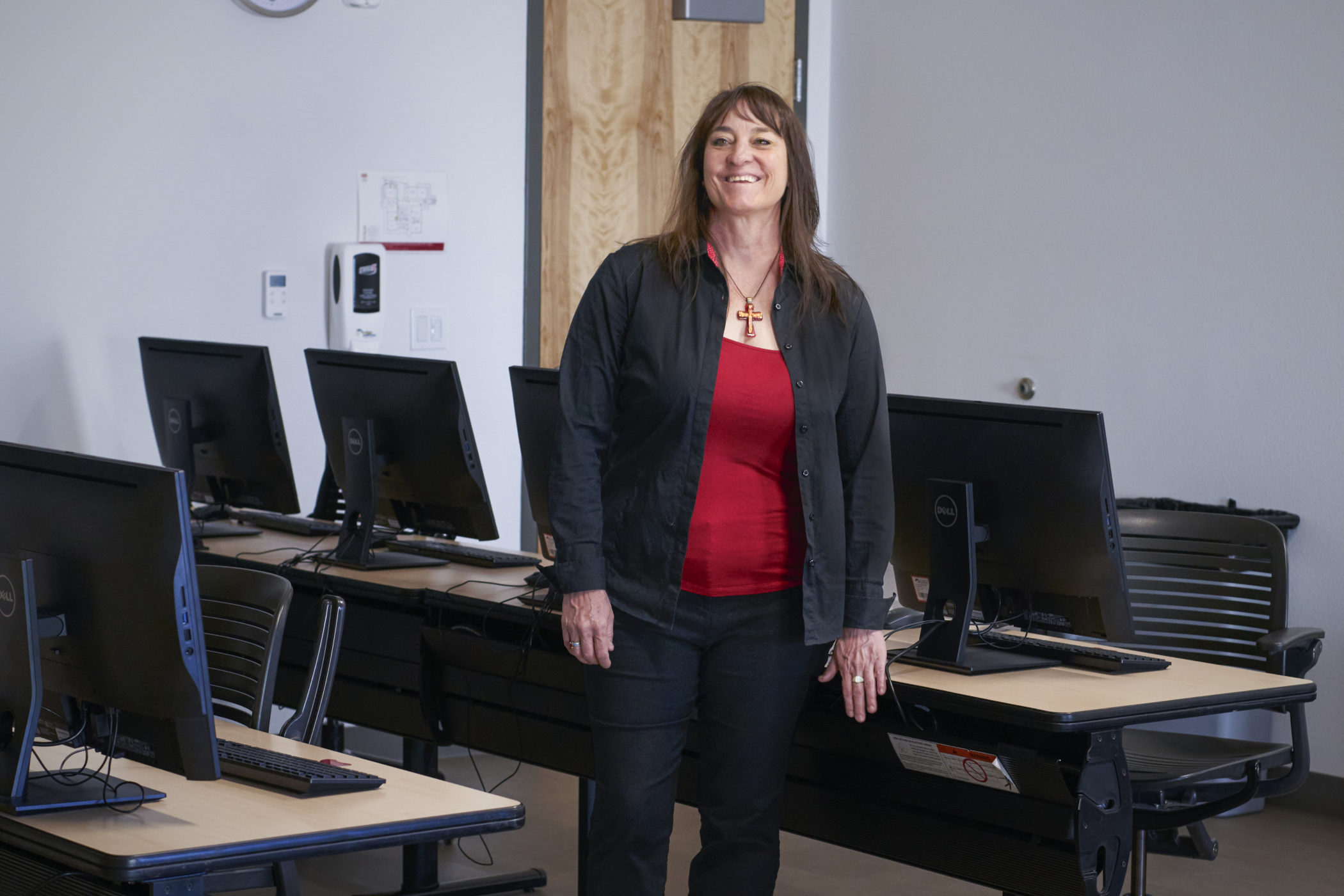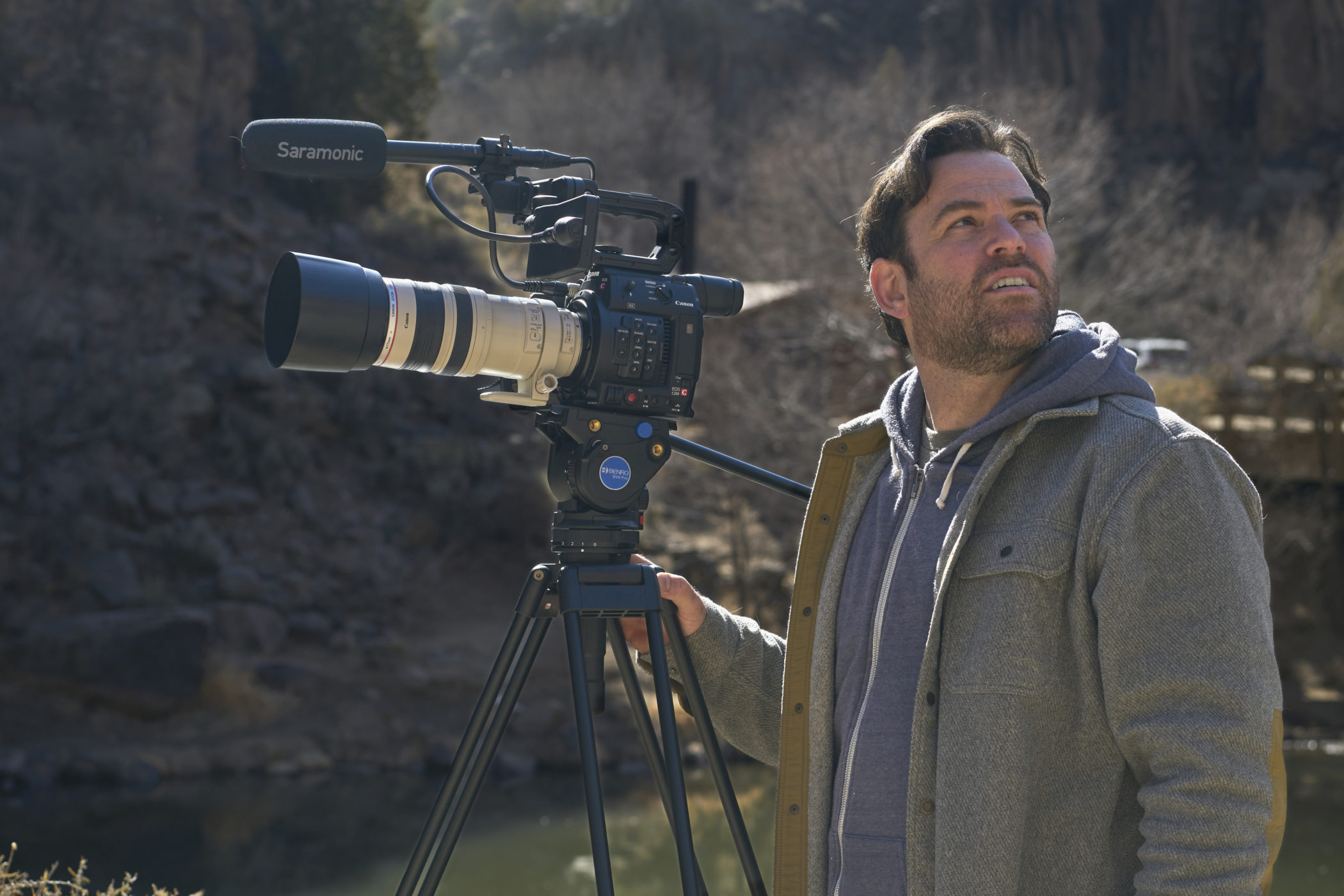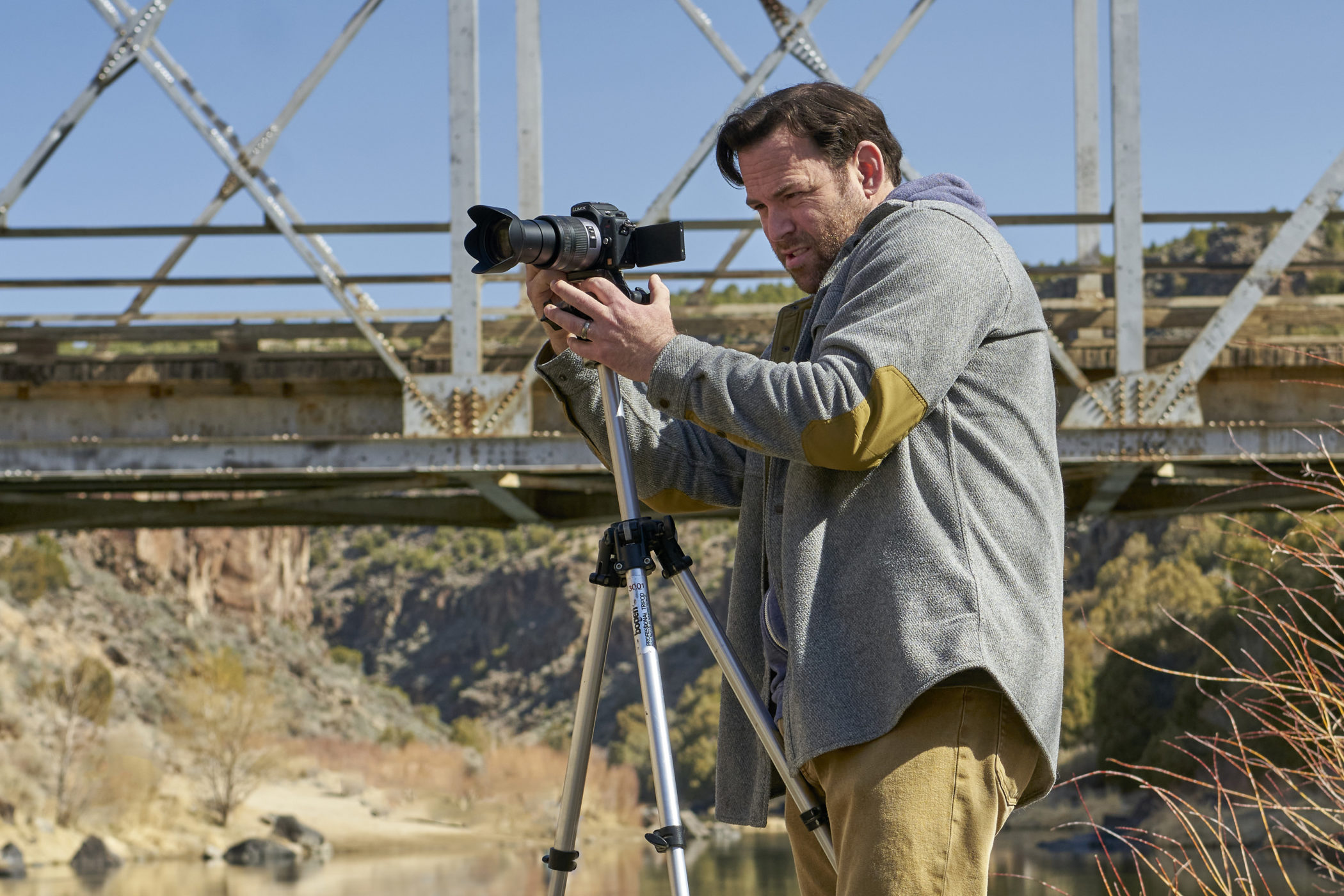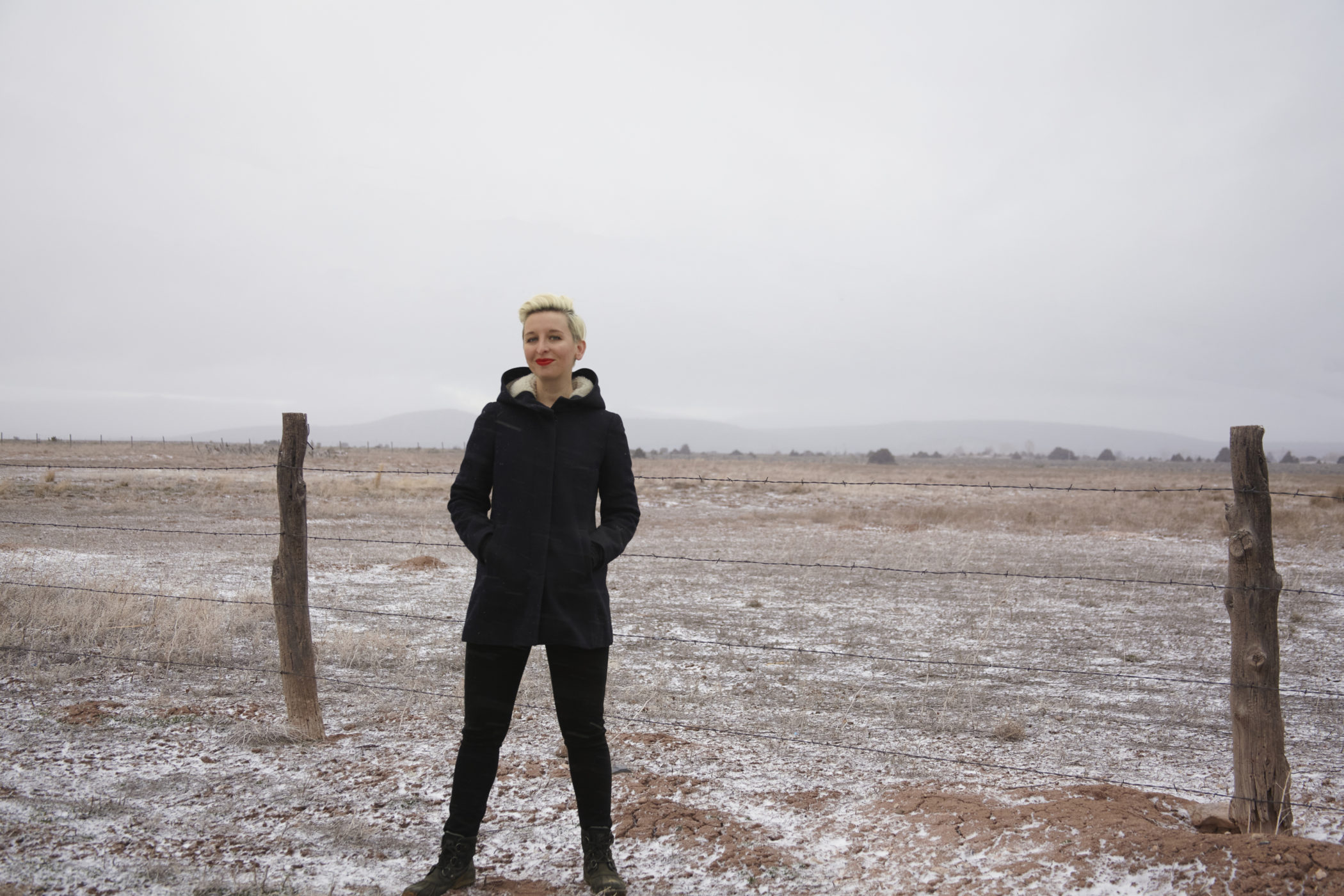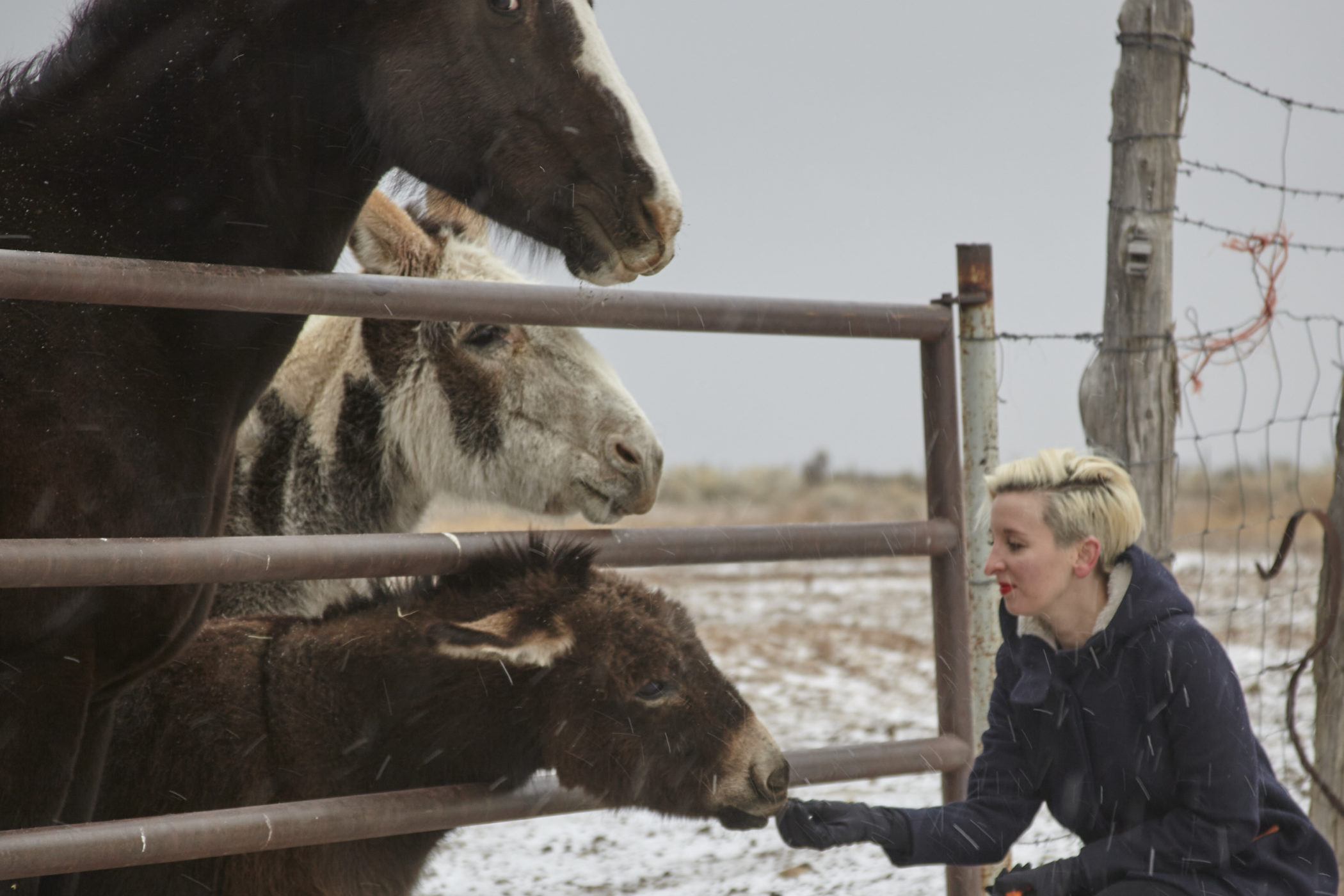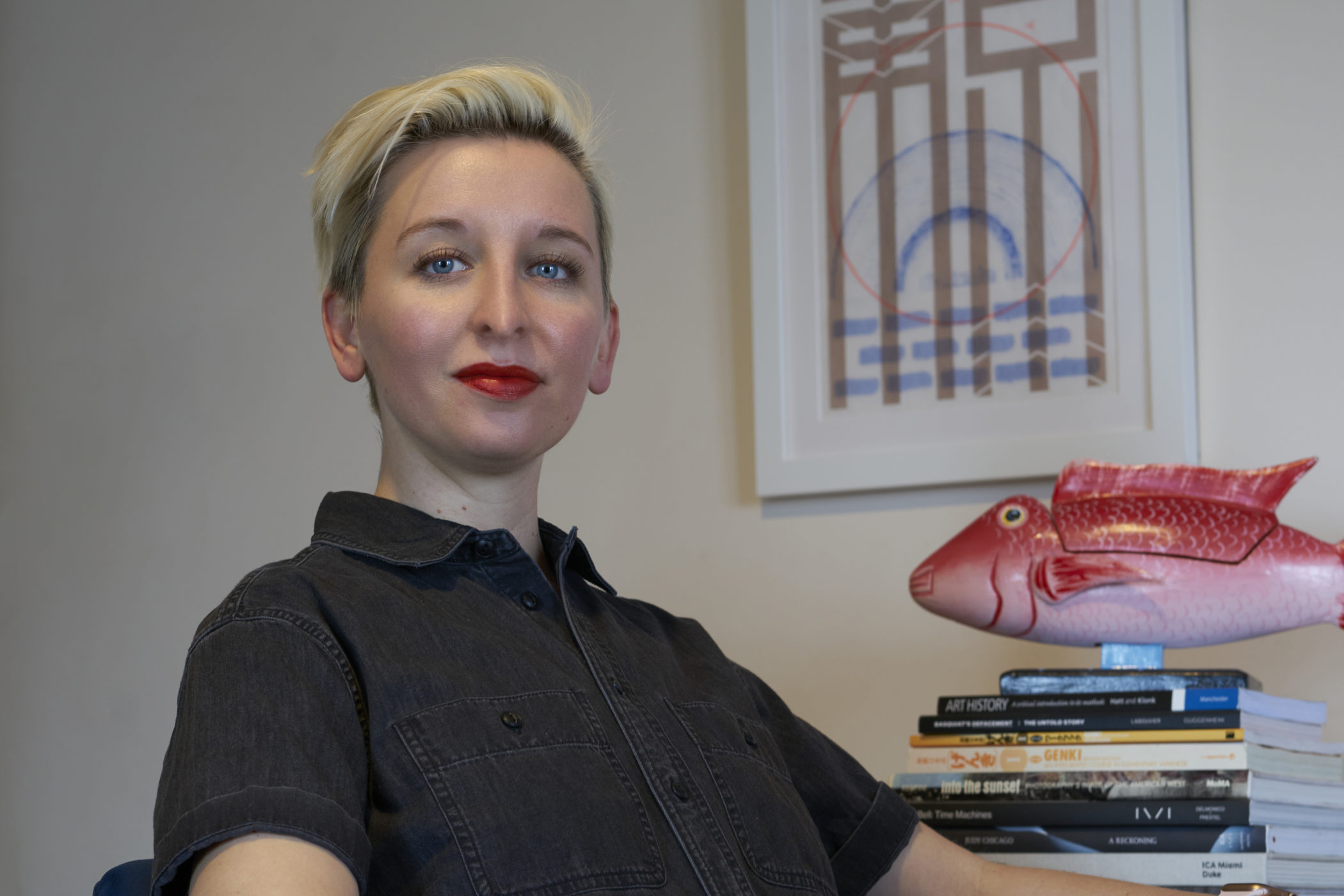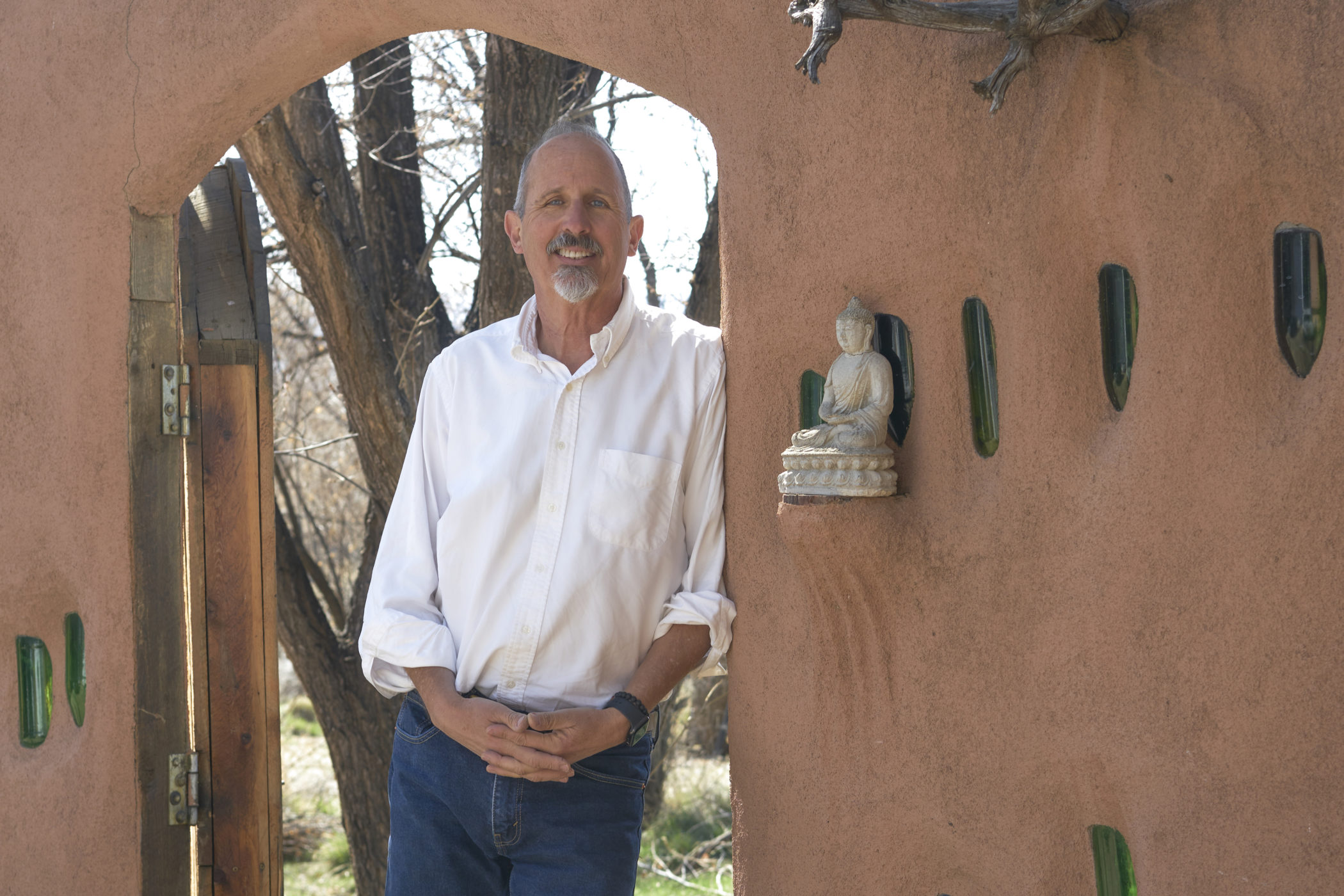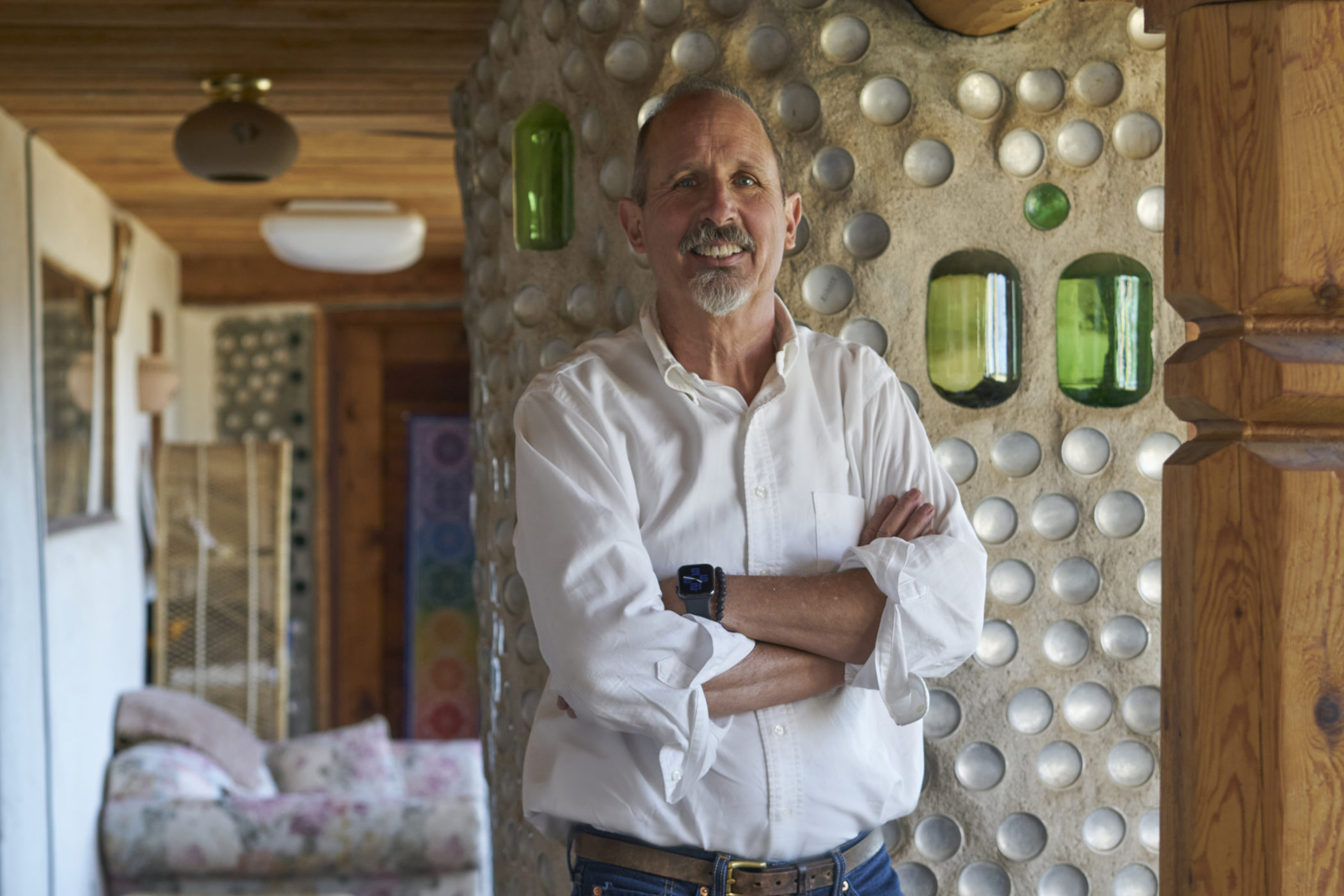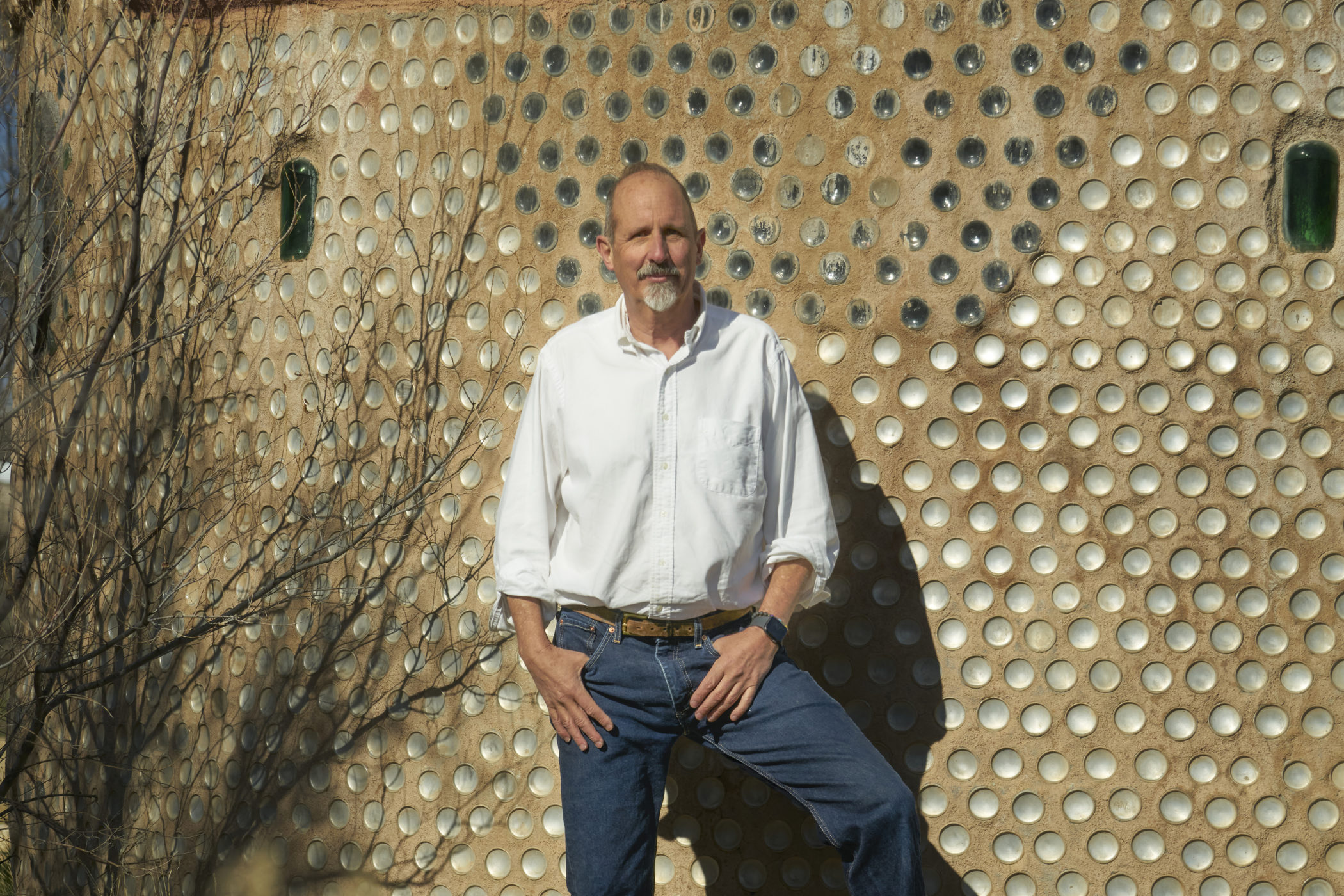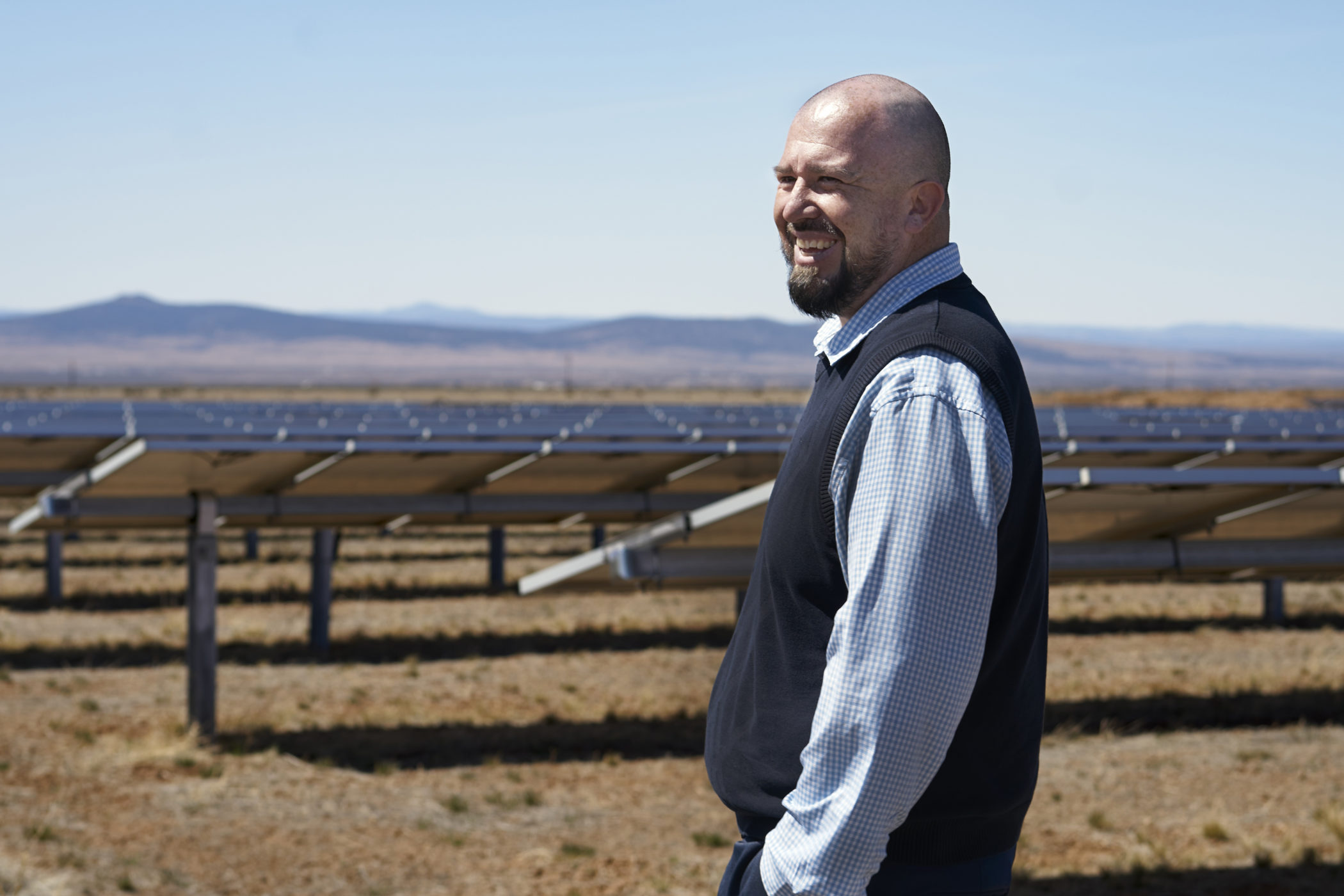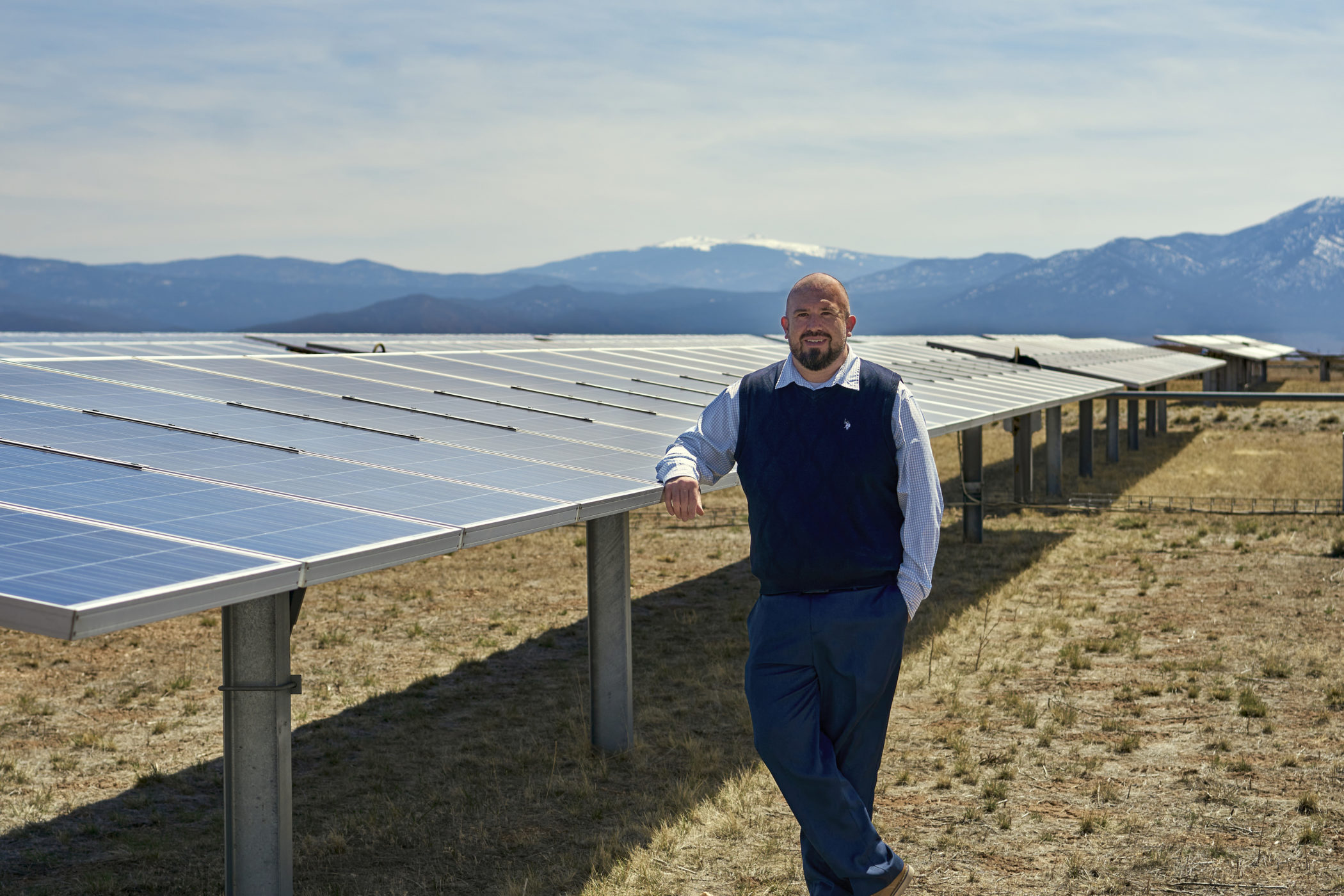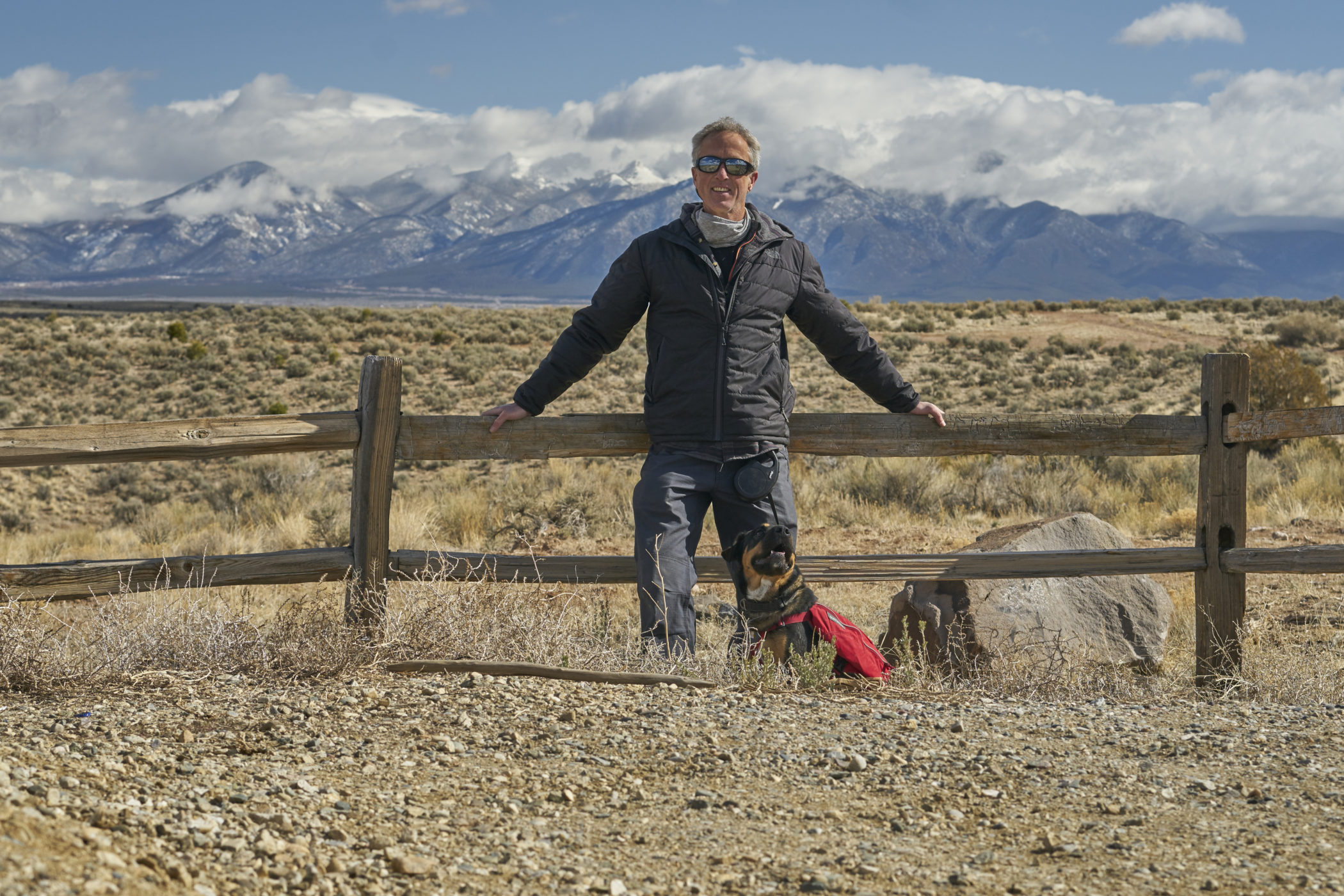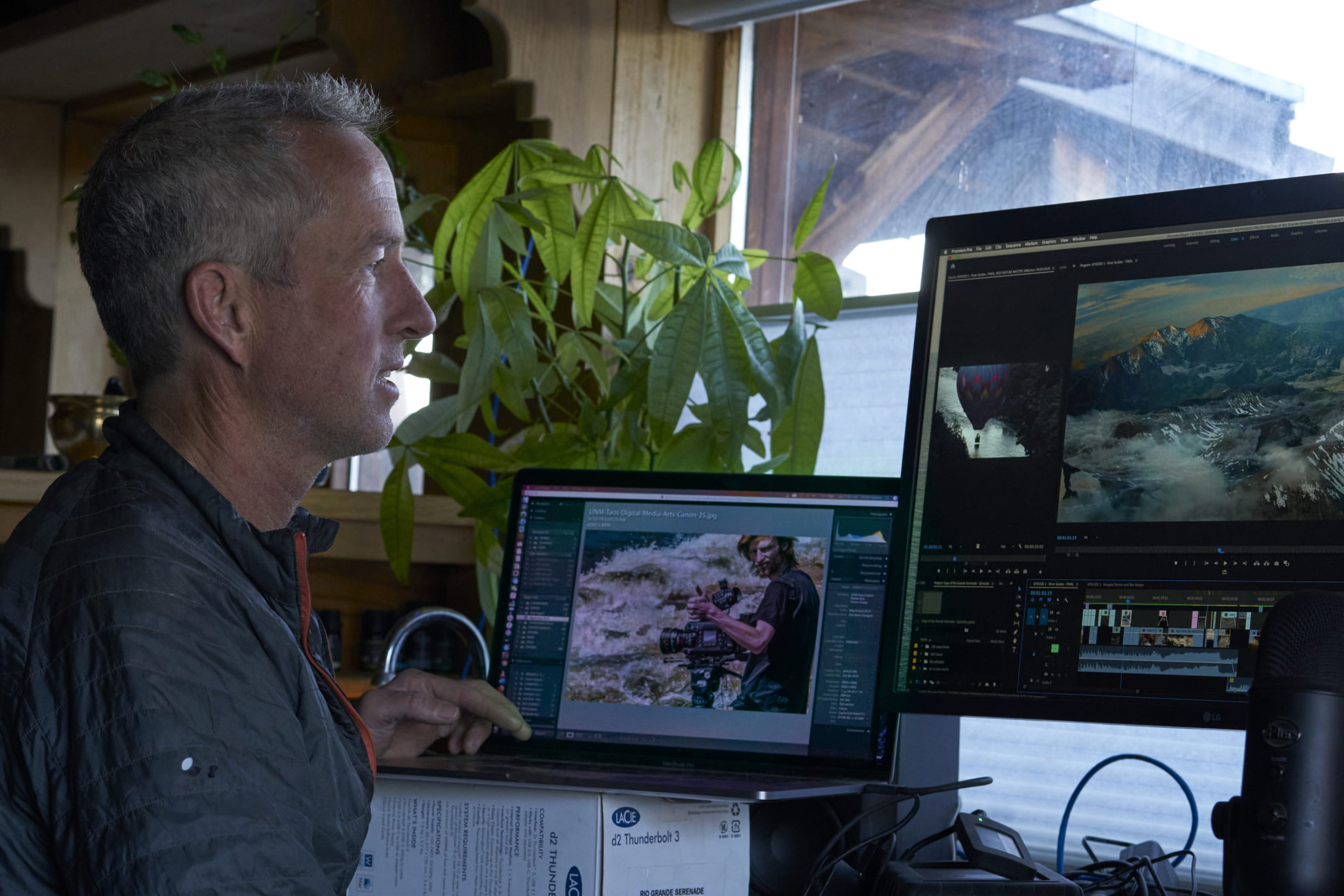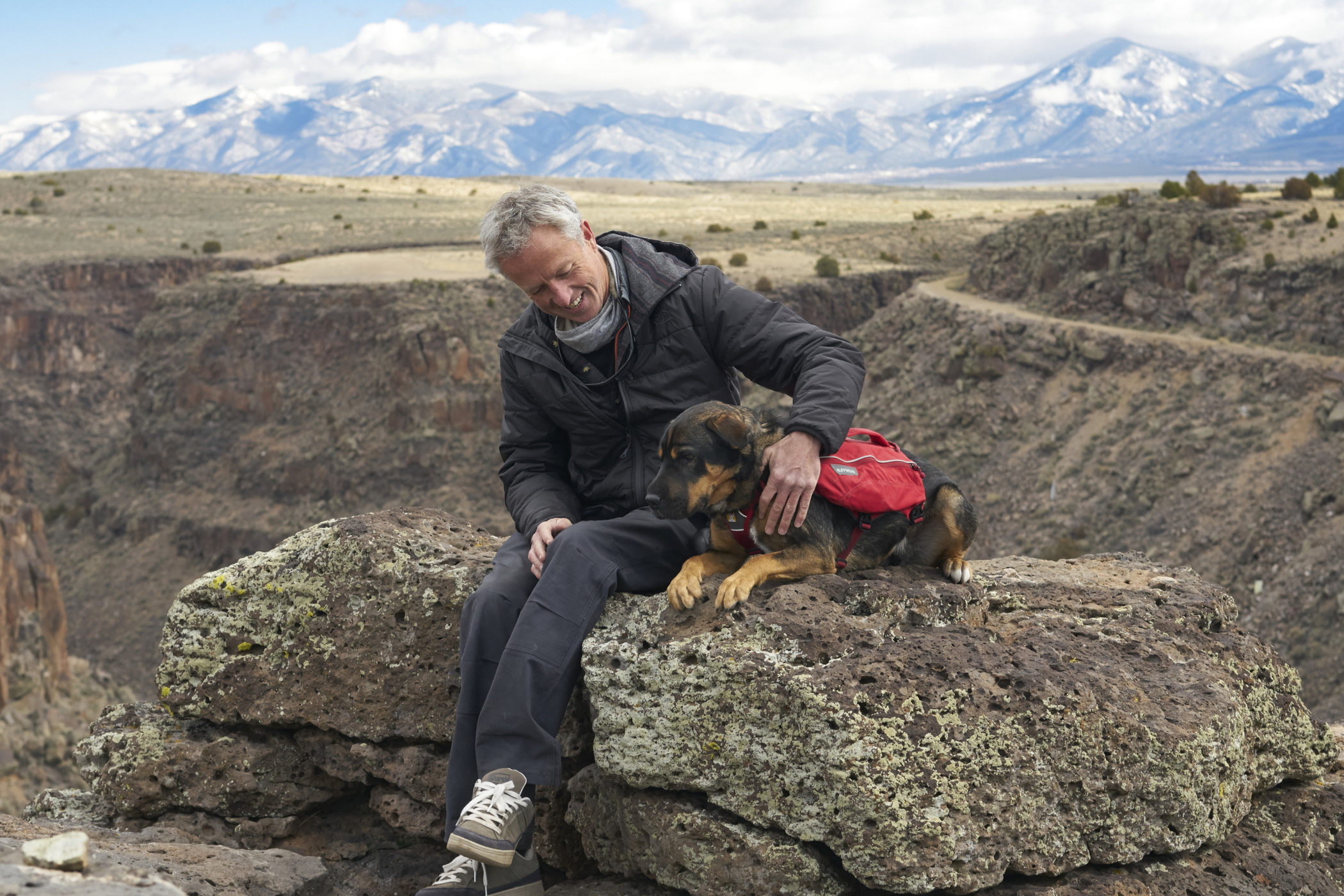Portraits of a community: Taos
In the wide-open spaces of northern New Mexico, at the foot of the Sangre de Cristo Mountains, there’s a place where ideas about what’s possible are big and bold enough to rival the stunning landscape.
It’s a place with a rich, multicultural history, and a creative streak so deep it can fuel thriving arts and technology sectors.
It’s a place called Taos.
A diverse town of about 6,000, it is home to world-class outdoor recreation and fiber broadband connectivity. It is the site of a centuries-old Native American community and UNESCO World Heritage Site at Taos Pueblo. And it boasts a cutting-edge digital hub — the UNM-Taos HIVE — that offers educational and business resources for tech-enabled workers and entrepreneurs.
In short, Taos shows just how multi-dimensional America’s rural places truly are.
That’s why the Center on Rural Innovation partnered with Taos photographer Kathryn A. Hayden for the first installment of our “Portraits of a community” series. This project is meant to shine a light on the people who make up the unique ecosystems within CORI’s Rural Innovation Network (RIN), which connects rural leaders and advocates around the country to accelerate their learning and amplify their work on the ground.
Nate Berkopec
Web development consultant, author
Burned-out by working for New York City tech start-ups, and well into his career as a consultant helping companies optimize their web applications, Nate Berkopec decided to trade a 30-minute commute to the John F. Kennedy Airport for business trips for a 30-minute jaunt to the slopes of Taos Ski Valley. The Minnesota native and his wife relocated to Taos in 2016, drawn to the open spaces, recreation opportunities, and blazing internet. Now, more than ever, it feels like home, a place he can savor the bird-watching, a spacious home office, and more time to give back as part of the local search and rescue squad.
“I went to New York because I wanted to live in a big city and I wanted to work in tech start-ups, but I did and it kind of burned me out. You really couldn’t get the experience at that time without living in New York or San Francisco. I was working remote for a year or two before I thought, ‘Why are we still here?’ If you could live anywhere and do the thing you’re doing right at that point, why wouldn’t I want to try living out in the country?”
“There’s a bigger sense of community here than I ever had living in New York City or even in a suburb, like where I grew up. I feel an obligation to that community and it would feel weird or wrong to treat people in Taos like I did in New York where they’re just walking by. … In my work, there’s this idea that we write code and put it up online for anyone to use for free and there’s a community around that. Now I find I’m more generously giving away my time with that, trying to build a community online and Taos has probably contributed to that.”
Agnes Chavez
Artist, founder of STEMarts Lab
A new media artist and a physics buff, Agnes Chavez lived in Paris and New York City before moving to Taos in 1986. She thought the high-desert landscape would provide a getaway and influence her work. In the three-plus decades since, the area’s people and unique multiculturalism shaped a career that combines art, science, education, and entrepreneurship. Chavez’s experience as a bilingual mother — her family came to the U.S. from Cuba — led her to launch Sube, a language-education program that’s helped half a million students. Through the sci-art educational program she founded in 2009, STEMarts Lab, Chavez has studied at CERN in Switzerland, home of the Large Hadron Collider, to inform her art projects related to particle physics. In 2014, she cofounded a Taos arts festival called The PASEO.
“One of the challenges of a rural community is if you never leave, you don’t have access to what’s going on in the world. So I feel like what I’ve been doing here in Taos all these years is bringing cutting-edge art and science and technology to this community. I just love to see the kids light up, the community get turned on to something.”
“When I look back at everything I’ve created — Sube, STEMarts, everything I’ve done — it’s always been as a result to a need in the community. I always believed the mission behind my work is arts integration, I think there’s so much it can do for education and for society. That’s what drives my work, that’s how STEMarts Lab came about.”
Melissa Lind
Digital marketer and website developer
A former landscape architect in San Francisco, Melissa Lind packed up and moved to Taos with her husband 8 years ago. The Colorado native wanted to get back to the mountains she missed and establish a career that allowed their family to be more mobile. Lind has since melded her previous experience with new skills — web design and marketing — to found her own company, Dwelling Creative, that’s grown with her. She’s pivoted from gaining experience working with local businesses to fielding clients from around the country, custom builders and architecture firms, and others focused on sustainability.
“We realized after being there for 5 years that we were really mountain people and we had to get back to that. But when we moved to Taos, we both didn’t have jobs lined up. In the Bay Area we were both well-connected and making good money … and, yeah it was a struggle to begin with.”
“I started working as a waitress, which was very humbling — I’d been working for these big firms doing really high-end work for luxury homes and streetscapes — while I’m building this little business thinking, ‘Is this going to work? I don’t know…’ Then I started getting local business, not charging much, just to get the experience, taking whatever came my way.”
“It took me about 4 years to really find my place. It was really that niching and coaching that made the difference. I was all by myself, saying yes to everything. It took that coaching, someone able to look at the big picture of what I was trying to accomplish and say, ‘Hey, you’ve got skills that are unique to you, that nobody else has.’ It feels really good to have finally gotten there.”
Nikki Maes
IT Services Manager, UNM-Taos
Eager to travel and see some of the world, Nikki Maes left Taos after high school. She had no clue then about coming back. When she did, Maes gravitated to work in schools, first as an aide, then as a computer teacher. She changed lanes from education to tech after having her first child, and has been climbing the ladder ever since — managing networks for the local electric coop, the school system, the town, and now UNM-Taos. It’s a career that’s allowed Maes to raise two children, and pursue passions that range from geology to hunting to softball.
“I’d lived in Albuquerque at different times. I was a nanny on Long Island, in New York City. And I realized I just wasn’t a city person. I found myself wanting to come back to Taos, and somehow knowing it would be in the technology field would give me a better chance to survive financially as a single mother.”
“It means a lot to me in the sense that I’m home. I have ancestors that go back more than 100 years here. I’m surrounded by family. … My father, he worked with the telecommunications network here for 37 years. I remember being a kid and he was climbing these poles, he was working on boxes, had all these different colors of cables, I always thought it was interesting. And when T1 lines and fiber optic lines came in, he installed those. I saw that technology come to Taos.”
“I really enjoy doing what I’m doing. I did doubt myself at some points because IT really was a male-dominated field, but you’ll see now there’s so many women in the field. You really do have to believe in yourself, and have the self-confidence that what you’re doing is what’s best to gain a better life for you and your family.”
Pete Monro
Filmmaker, online teacher
Originally from suburban Detroit, Pete Monro bounced between Los Angeles and New York City pursuing an education and career as an actor, and, more recently, a writer/director. Through experimentation, and trial and error, Monro’s built a portfolio that includes music videos, feature films and scripts. He and his wife visited Taos for their 1-year anniversary and soon moved to New Mexico. They ended up in Taos mid-pandemic, the timing allowed Monro to seize upon his most recent act — teaching online — with local organizations Moving Arts Española and TruKids1, a Taos-born media education nonprofit. Now he’s creating ways for remote students to maximize the technology at their fingertips to better understand film theory and videography.
“My goal when I got back to New Mexico was to get involved in the film scene here. … And I was approached a few months later to do a video production summer camp workshop, a digital daycamp. That was the beginning.”
“Since then I’ve been teaching nonstop and it’s really cool. It’s great. There’s this learning curve where I’m learning how to teach and learning how to teach online — that’s like the only experience I’ve gotten. It’s been interesting. I’m trying to curate film theory for kids, but I’m also trying to show them how stuff works.”
“I feel like if I was in-person a lot of this time I’d be pushing hands-on time, getting their hands on a camera, showing them how to frame shots. But the way it is with these virtual workshops, I’m thinking about how they’ve got phones, they’ve got apps, and that’s all I can assume. … They’re 12-year-olds, 15-year-olds, and I’m trying to teach them the big picture, get their brains thinking about how cinema is a language.”
Lili Rusing
Nonprofit development consultant
A three-month road trip around the U.S. ended with Taos as the winning destination for Lili Rusing and her husband as they plotted a move away from New York City in 2016. The rugged landscape didn’t just include faster internet than they had in Brooklyn, it also offered an immediate feeling of possibility — a lower cost of living and less stressful lifestyle. An Arizona native, Rusing was taken by the scenery and the local arts culture. Travels since have only cemented the sense that Taos has become home base to continue her work with arts and culture nonprofits, which includes volunteering locally with the Paseo Project.
“There’s, like, five museums, which is crazy because the population is so small. It’s an active, creative community and that appealed to me, someone coming from New York and being involved in the arts community there. Taos just seemed like it was punching above its weight in terms of what you could do with arts and culture, and people being really innovative and interesting here.”
“I care a lot about my career. It’s been the center of my life since I graduated from college and I’ve put a lot of work into it. I worked really, really hard when I was in the city, but it got hard for me to live in the city after a while. Coming to Taos allowed me to continue a career I really care about with a better quality of life outside of work. In the city, you’re constantly bombarded with all these inputs — sounds, activities, visuals — and that’s what’s great about it. But being rural, you can clear that out a little bit and it gives you more mind space, I think.”
“Now I think I can accomplish as much in, say, three hours as I could in a full day in an office. It’s nice because I work fewer hours now than I did when I was working full-time, but I can still make the same amount of money or more, actually.”
Marko Schmitt
Software developer, entrepreneur
After a dozen years in Maine, entrepreneur Marko Schmitt arrived in Taos in 2014 seeking to start something new. He found that inspiration as the business manager for the Taos Farmer’s Market and honed the vision over time, volunteering with the local entrepreneurial network, teaching workshops, and working as an advisor with the Small Business Development Center. Now Schmitt and his family live in one of the town’s iconic earthship dwellings, a home base for them to enjoy Taos’ natural environment, and launch his latest venture, inBizWorks. The start-up aims to leverage technology to help mom-and-pop businesses and solo-preneurs capitalize on resources — the kind usually reserved for high-tech, fast-growth companies — that help them grow or just get off the ground.
“I came here to Taos really looking for how to use my skills and fit into the community, and came up with this wonderful platform idea and it’s actually taking off. I’ve got three co-founders, we’re in the process right now of scaling up.”
“It’s really about extracting what works in the venture capital-funded model without the craziness and hysteria and expectation of high returns that it’s all founded on. We’ve created this platform that we believe, when adopted by economic development corporations, will create the foundation for ecosystems — that’s where things get exciting, when people are exchanging information and there’s access to mentorship and resources.”
“I’ve lived a lot of places. I’ve lived in Paris, Los Angeles, New York, I went to school at Columbia University, but when I arrived in Taos I had that little sparkly feeling that there’s something interesting going on here. It’s super soulful and it’s really fed my work. I feel grateful every day.”
Adonis Trujillo
Program Manager, Microsoft
Time away from his ancestral home, Taos Pueblo, only reinforced Adonis Trujillo’s desire to get back to the place his people have inhabited for centuries. His studies took him to Arizona and Colorado, and after gaining his MBA he transitioned from a vendor to full-time employee with Microsoft’s datacenter community development team in Seattle. But the COVID-19 pandemic allowed Trujillo, his wife, and their young son to return to Taos, and work remotely in the community that raised them. And Trujillo’s heritage has also inspired him to spark change at the tech giant, part of a group that brought about the creation of a global resource group to serve indigenous peoples within and outside of Microsoft, an important vehicle for advocacy and mentorship.
“It’s imperative for us to be near Taos Pueblo, our home community, because our language (Tiwa) is not written, it’s not something you could learn outside the community. Our traditions are not going to be virtual. If you want to learn, if you want to acquire the knowledge and pass it on to future generations you have to be here in person.”
“When I moved up to the Pacific Northwest, I felt pretty disenfranchised from the community. We were so used to being surrounded by our family, by our indigenous culture, that it was almost heartbreaking to go to a new city and not be part of a community.”
“With this employee resource group, we wanted to help drive the directions the company takes, incorporating things like land acknowledgements any time we have a big company-wide event, or having original stewards of a place come and provide a blessing ceremony when we break ground to build a new site, or incorporate indigenous art into the design of new buildings. That’s how Taos Pueblo’s impact on me helped drive change at Microsoft.”
Daniel Trujillo
IT Director, Kit Carson Electric Cooperative
The birth of their first daughter gave Daniel Trujillo and his wife, also a Taos native, the push they needed to return 11 years ago. They wanted their children to grow up around family, in the same rich cultural and natural environment they enjoyed as kids. Now Trujillo, a former wildlife biology major, is in charge of the network infrastructure for his hometown utility coop, whose technologies have the community on the cutting edge, a magnet destination for remote workers.
“Just in the timeframe I’ve been back, the fiber network that’s been put in place has really advanced the community in a bigger perspective. Yes, we’re a smaller, rural community but we’ve got faster speeds than some of the big cities.”
“What we’ve been pushing now is a carbon-free environment, and we’re counting down the days. We’re, like, 200-some days left until Taos County is 100% daytime-solar. We’ve installed quite a few solar sites — and we’re installing two other big solar sites — with real-time data analytics. That’s what I’ve been in charge of now, maintaining that network infrastructure for the critical devices out there for collecting analytics and to plan better in the future.”
“Being here, living here your whole life, you really take the outdoors for granted. Then you move away and come back and realize what you have. You have a bigger appreciation of that natural beauty. We go hiking, we go fishing, we go skiing. We go camping, try and unplug once in a while and just enjoy life. I’m plugged in every weekday, all day, and it’s good to unplug … but it’s a lot harder for me to find a place to unplug.”
Peter Walker
Digital Media Arts Program Coordinator, UNM-Taos
Born in Taos, Peter Walker chased his interests around the globe before returning in 2010. He earned a masters in education at the University of Oregon. He taught in the U.S. and China. He became obsessed with independent filmmaking. He studied film in India, then lived and freelanced in southeast Asia for three years — until the high desert and changing seasons called him home to northern New Mexico. Now he teaches media arts and engages in wilderness activism work through film projects, like the recent documentary “Rio Grande Serenade.”
“People here do a lot with a little bit of resources. They really learn how to be innovative and use creativity instead of money. That’s why things are done differently here.”
“I’m happy to have a great job in my small hometown. We’re very grateful to have the UNM-Taos branch here — it’s a great opportunity for people to get new skills and gain experience. I can do all this tech work, have all this fancy gear for our productions, then come back to where I live and we’ve got horses and dogs and chickens and cats. It’s a lot of high-tech meets rural.”
“There’s a fierce independence and sense of freedom here that I love so much. I’m a big advocate for that. That sense really drives me. I just want to keep that spirit alive, come up with new ideas, putting things out there, making beautiful art that impacts people.”
It doesn’t end here.
Taos is a shining example of what can happen in America’s small towns when communities work to develop thriving ecosystems.
Through its Rural Innovation Network, CORI’s work makes it possible for local leaders to connect and learn from each other in a community of practice. RIN members have a range of resources at their fingertips to help implement what CORI has identified as Direct Drivers of vibrant digital economy ecosystems:
- Access to Capital
- Scalable Tech Entrepreneur Support and Incubation
- Inclusive Tech Culture Building
- Access to Digital Jobs
- Digital Workforce Development and Support
Each of these elements allow communities like Taos to compete in the broader tech economy.
Learn more
To meet the Rural Innovation Network communities doing ecosystem building in small towns across the country, you can find a list here.
If you are a community interested in working with us to grow or build your own digital economy ecosystem, please contact us.
To learn more about our work in this space, be sure to check out our blog and sign up for our newsletter.




